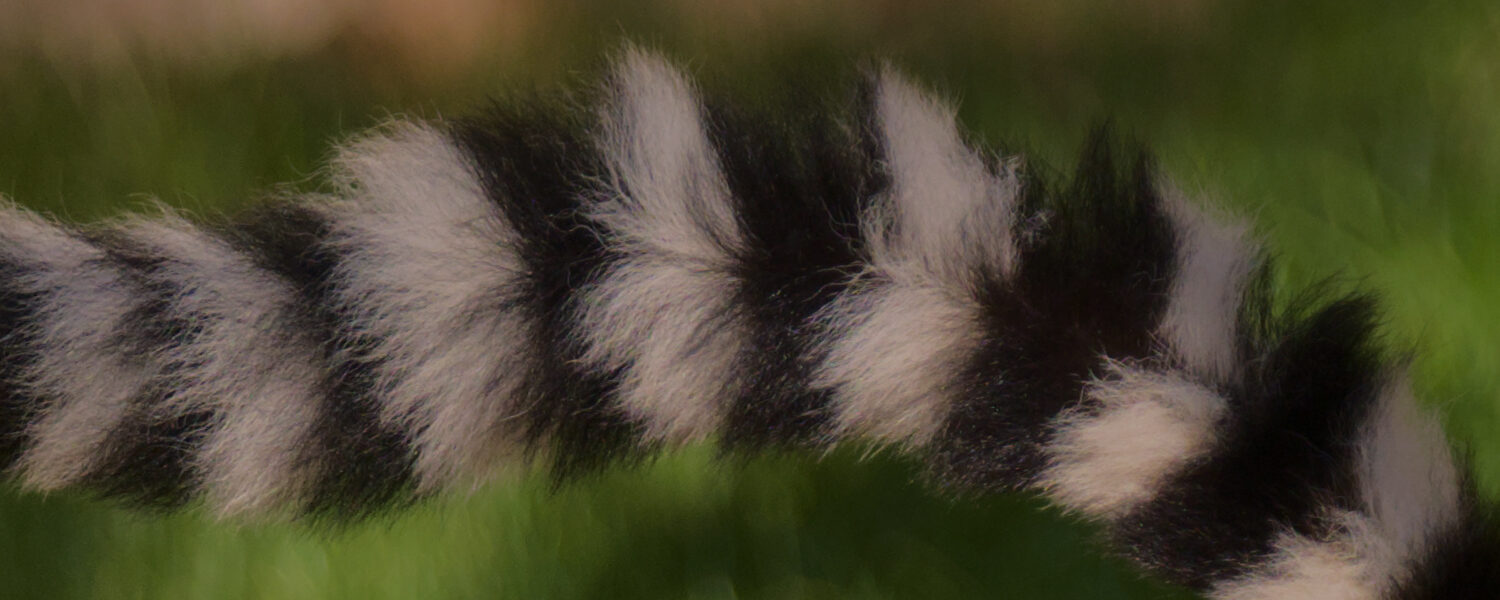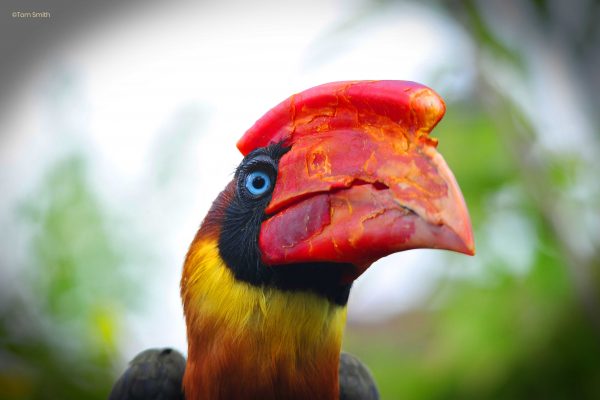Posted October 23, 2023 in Conservation
World Lemur Day 2023
World Lemur Day is celebrated on the last Friday of October! With 98% of Lemur species threatened with extinction and 31% critically endangered, it is important to help spread the word about their conservation.
Here at Colchester Zoo, we are home to 4 different species of Lemur: Ring-tailed, Red-bellied, Crowned and, Black and White Ruffed.
Join us on Friday 27th October and learn more about these incredible species at our Lemur Classroom! Explore artefacts, find out more about Lemur diets, discover more about enrichment activities and take part in our ‘Guess the Lemur’ sounds game!
RING-TAILED LEMURS (Endangered)
Ripple is 6 years of age and is the daughter of our dominant female, Madison. As her mother is a high ranking animal, Ripple is also naturally higher up in the Lemur social ladder. Ripple is often referred to as Dobby by her keepers as she naturally holds her ears lower down and flatter on her head than the others. This is a nice easy way to spot her in the group. Ripple has a quiet and friendly personality but will always be willing and waiting to back her mum up in any arguments within the group!
Lexi is one of our older females in our family group but is still only 12 years old (they can live up to 30 years old in zoos). Lexi is an intelligent individual who knows how to interact and play the other Lemurs in the group off each other to her advantage! This works in her favour as she most often sits lower on the Lemur social ladder. Lexi is our easiest Lemur to tell apart in the family group as not only is she the only one that has yellow eyes instead of the more common amber colour the others have, she also has lost the end to her tail. Tails are easy to grab hold of and be damaged by other Lemurs, and while their main use is for balance, Lexi manages very well with a shorter tail and it doesn’t seem to affect her.
Look out for these two girls in our family Lemur group that can be seen off the raised Lemur boardwalk.
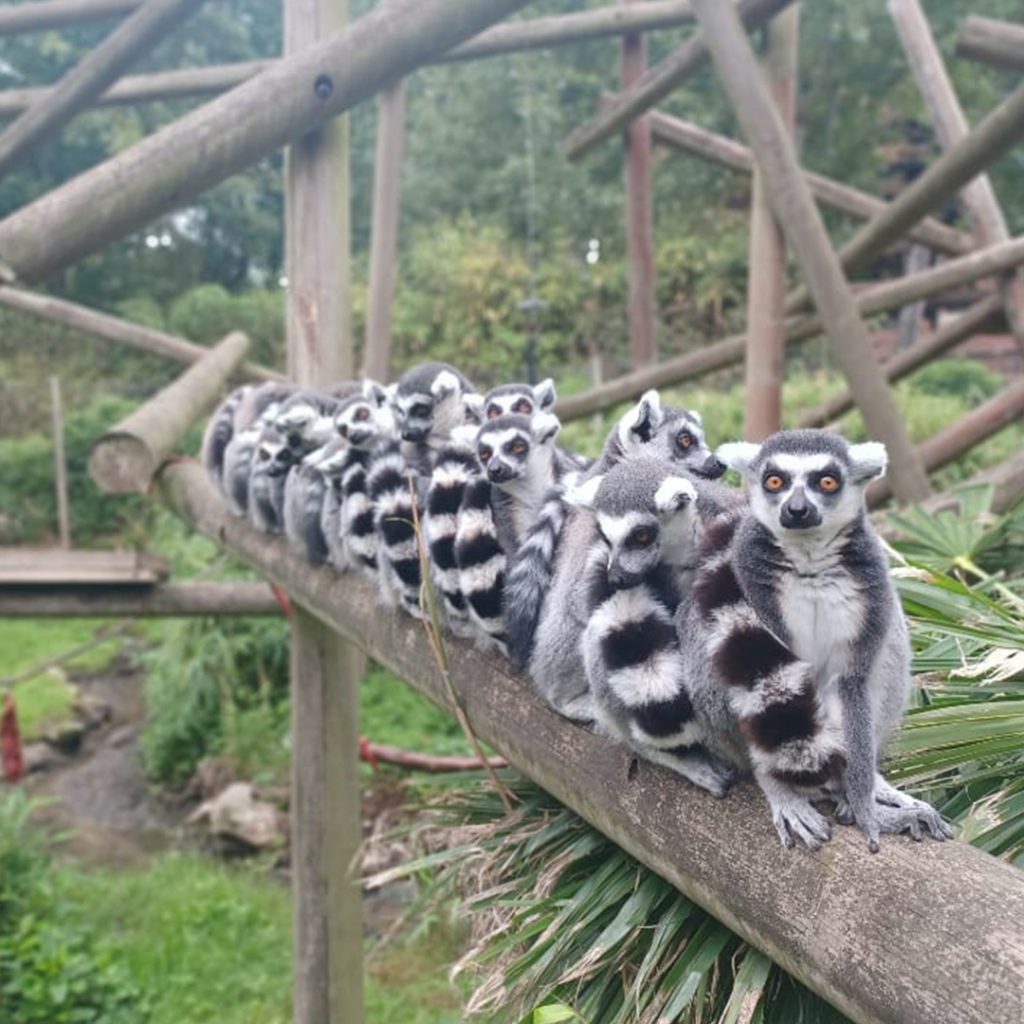
Ripple (Front) 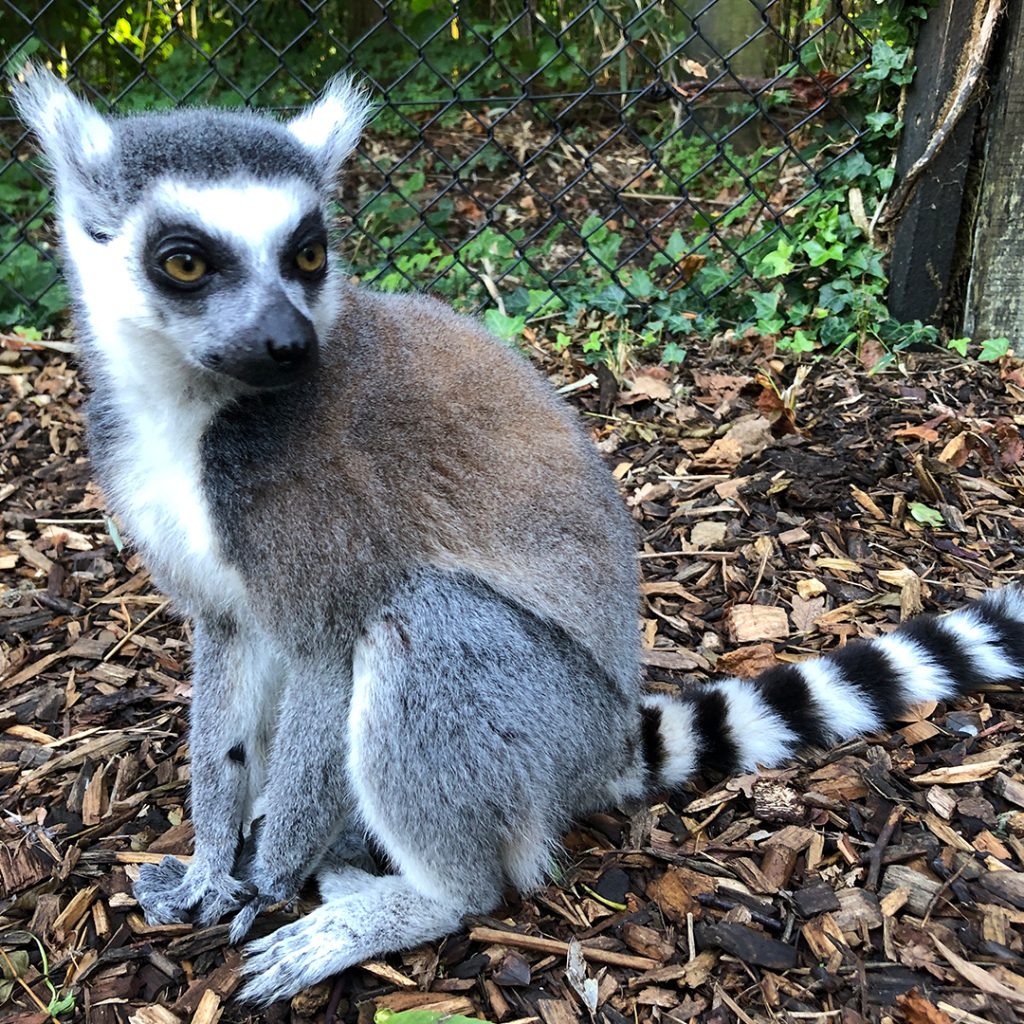
Lexi
Cabbage is one of our lower ranking male Lemurs in our walkthrough Lemur enclosure. He and his half-brother Parsnip are the only two Ring-tailed Lemurs in this enclosure that were not born here at Colchester Zoo. He is a quiet, yet affectionate Lemur and can often be seen warming his belly in the classic Lemur sunbathing position. Cabbage is most easily recognisable by his shorter tail. Tails are sadly easy to grab hold of in a fight and be damaged by other Lemurs, and although a Lemur’s tail is used for balance, Cabbage has adapted very well to a shorter tail.
Aero is one of the more dominant individuals in our bachelor group of Ring-tailed Lemurs in the walkthrough enclosure, he can often be seen hanging around with some of the other dominant individuals such as Rolo and Oreo. When not being dominant, Aero has a very laid-back personality and often likes to see what his keepers are up to and go ‘help’ them out. Aero’s best distinguishing feature is a little more subtle than Cabbage’s however the way keepers learn to tell Aero apart is by two black lines on his nose that end halfway up the bridge of his nose, which keepers describe as looking like a tuning fork. He is the only one with this marking in this group.
Look out for these two boys as you take a walk around our walkthrough Lemur enclosure, accessible during the Lost Madagascar Express train ride.
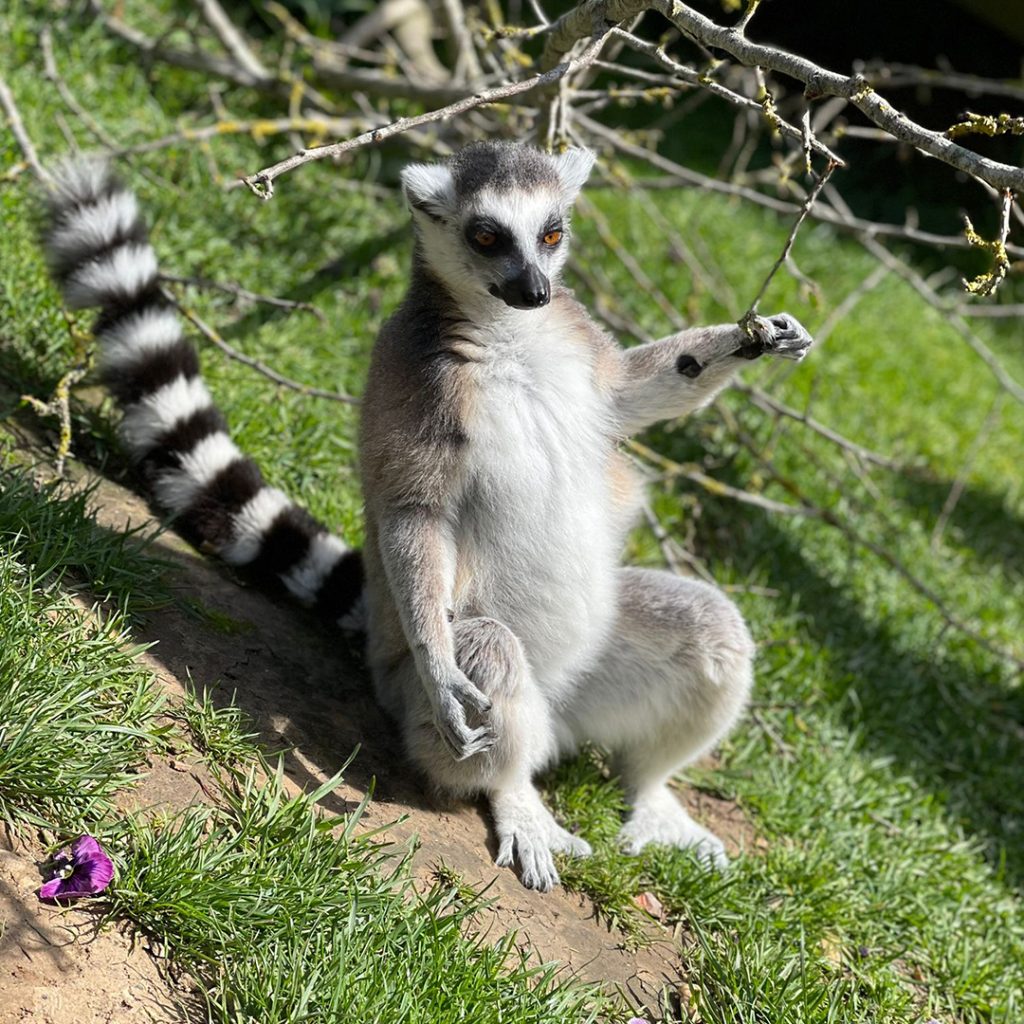
Cabbage 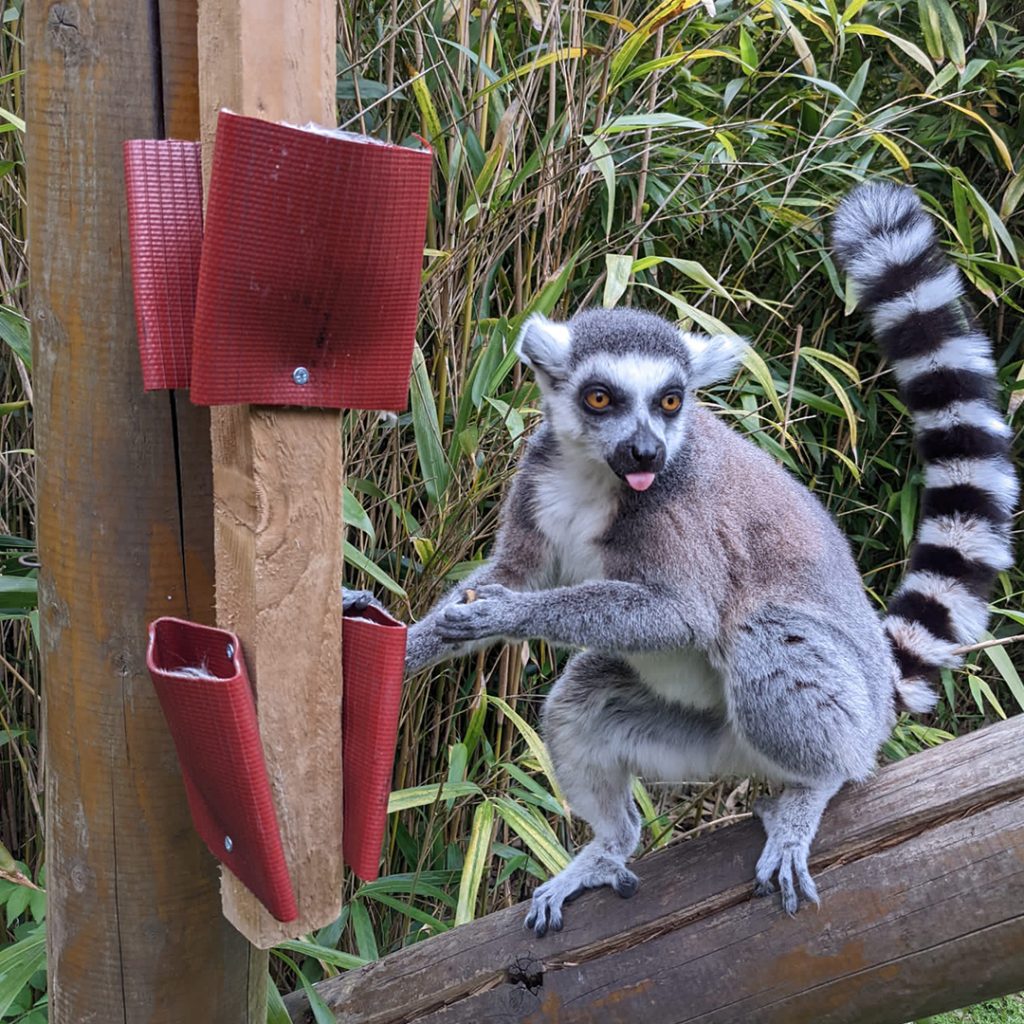
Aero
RED-BELLIED LEMURS (Vulnerable)

Paddy and Cody are our Red-bellied Lemurs brothers, both of whom were born at Woburn Safari Park. Cody is one year older and is the more confident of the two, happy to investigate anything or anyone new. Cody has the longer tail and the more rounded face, and is very vocal around his favourite keepers, often ‘snorting’ a hello to them. Paddy is a little more cautious and usually prefers to explore when he knows his big brother Cody is nearby. If he cannot see Cody, Paddy will call for him with a loud meow-like contact call to make sure he didn’t go too far away. He has the shorter tail and the pointier face. Like all Lemur species Lemur tails are used for balance, they are very long and easy to grab hold of and damaged by other Lemurs in fights. Paddy sadly damaged his tail and while it is now shorter, you wouldn’t think there is anything different about him as he copes very well with its reduced size.
Look out for these two as you take a walk around our walkthrough Lemur enclosure, part of the Lost Madagascar Express train ride.
CROWNED LEMURS (Endangered)
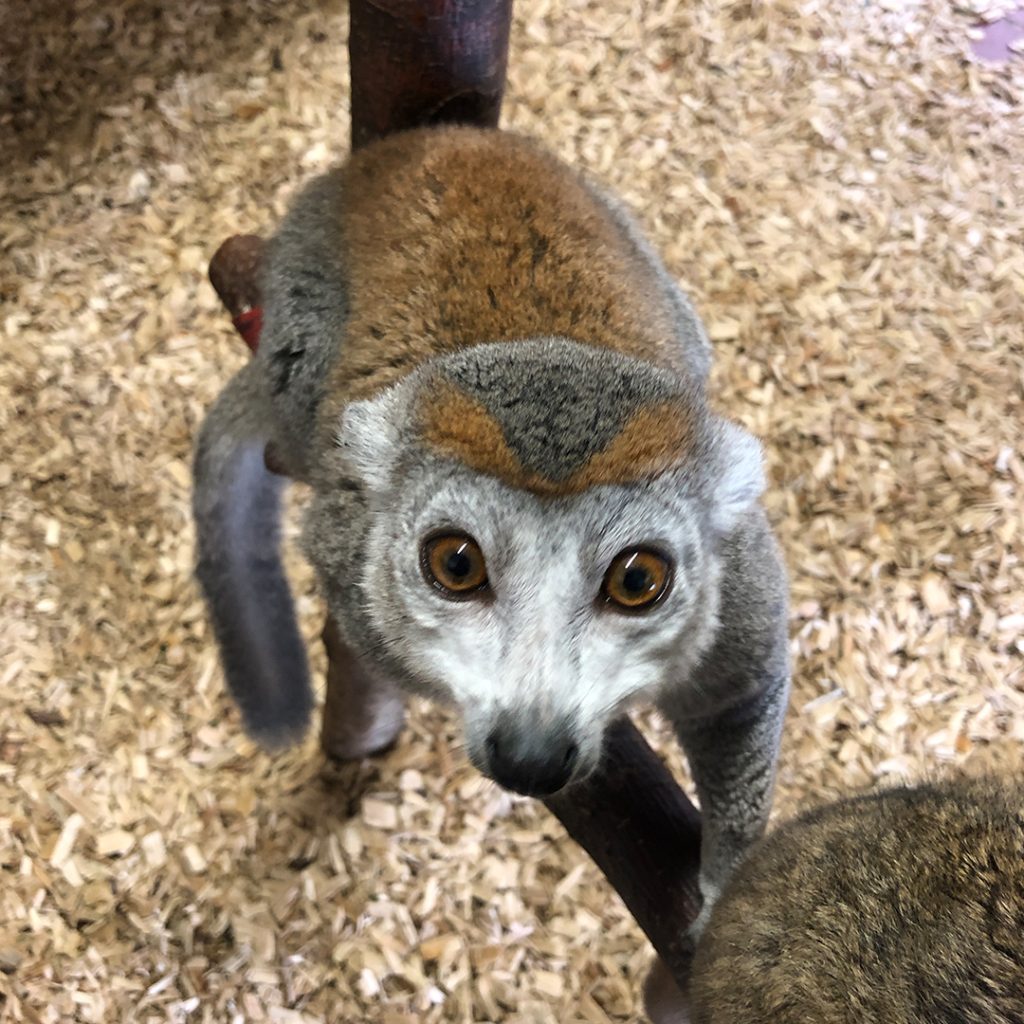
Triksie is our female Crowned Lemur and is the easiest to tell apart out of the three individuals we have here at the zoo due to her mainly grey colouration. Males have more orange-grey colouration than females due to sexual dimorphism within the species where males and females have different physical characteristics. All Crowned Lemurs get their name from the orange crown on the tops of their heads, and this is the same in males and females. Triksie very much rules the roost in this family group as female Lemurs are normally the dominant over males. She’s an excellent mum to son Arne and can often still be seen snuggled with him and with Ala, her mate.
The Crowned Lemurs are the most elusive of our Lemur species but be sure to keep an eye out for them through the windows of the walkthrough Lemur enclosure, the best times to spot them are towards the end of the day.
BLACK AND WHITE RUFFED LEMURS (Critically Endangered)
Here at Colchester Zoo, we are home to 2 Black and White Ruffed Lemurs. Adelie is 18 years old and enjoys spending her days relaxing in a hammock. She is known by the keepers to be a bit of a princess and if something isn’t to her liking she will let them know. Tanjona, affectionately known as Tanj, is 7 years old and is a lot more active than Adelie, spending a lot of time exploring in the outside enclosure. He is also very good at his foraging enrichment often working it out long before Adelie. Sometimes you might notice Adelie stealing food from Tanj. This is sadly something male Black and White Ruffed Lemurs must put up with, as like most other Lemur species it is the females that are the dominant of the sexes.
The easiest way to tell our two Ruffed Lemurs apart is by looking at the back of their heads; Tanj has a lot of white fur going from his back up to his head, whereas Adelie has mainly black on the back of her head.
Our pair of Black and White Ruffed Lemurs can be spotted from the raised Lemur boardwalk, next to one of our groups of Ring-tailed Lemurs and the Flamingos.
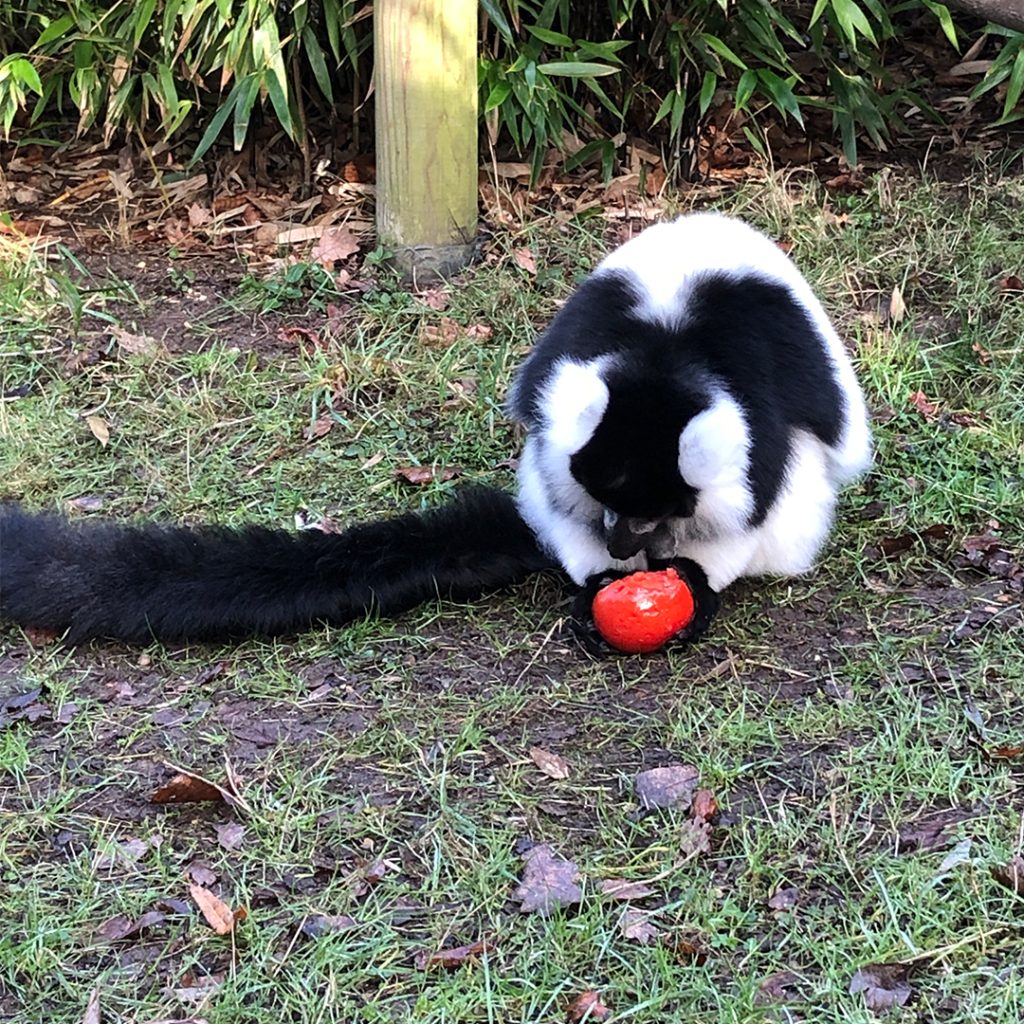
Adelie 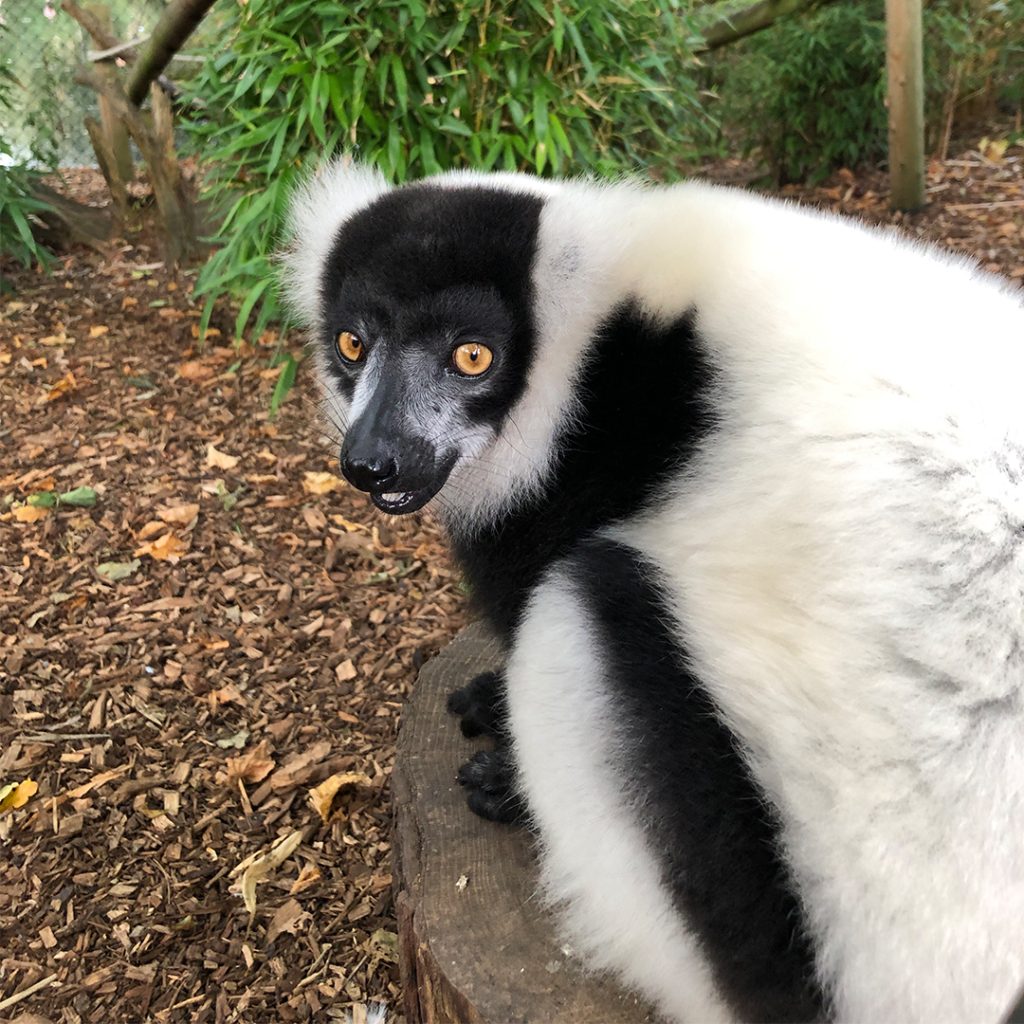
Tanjona

